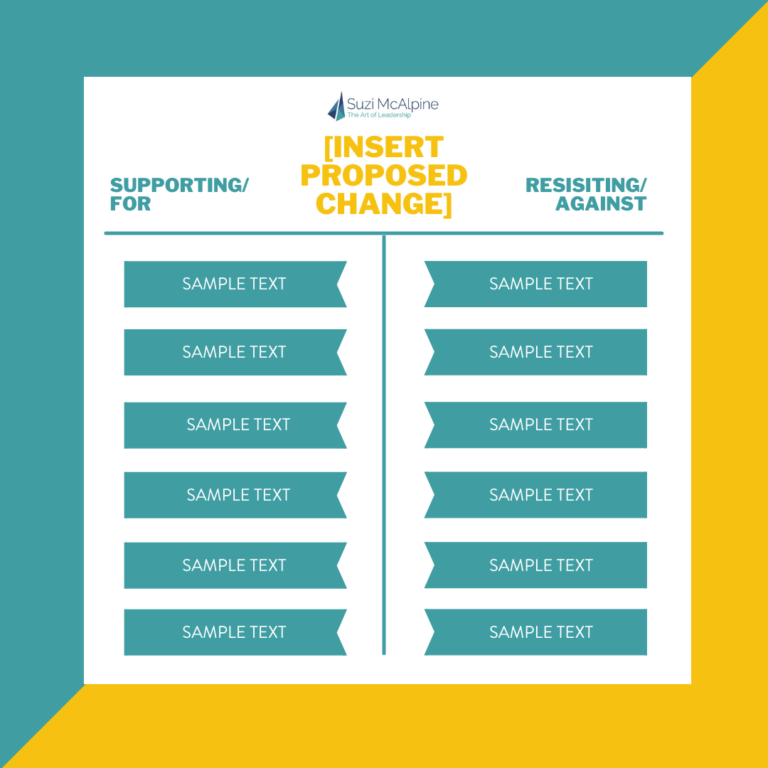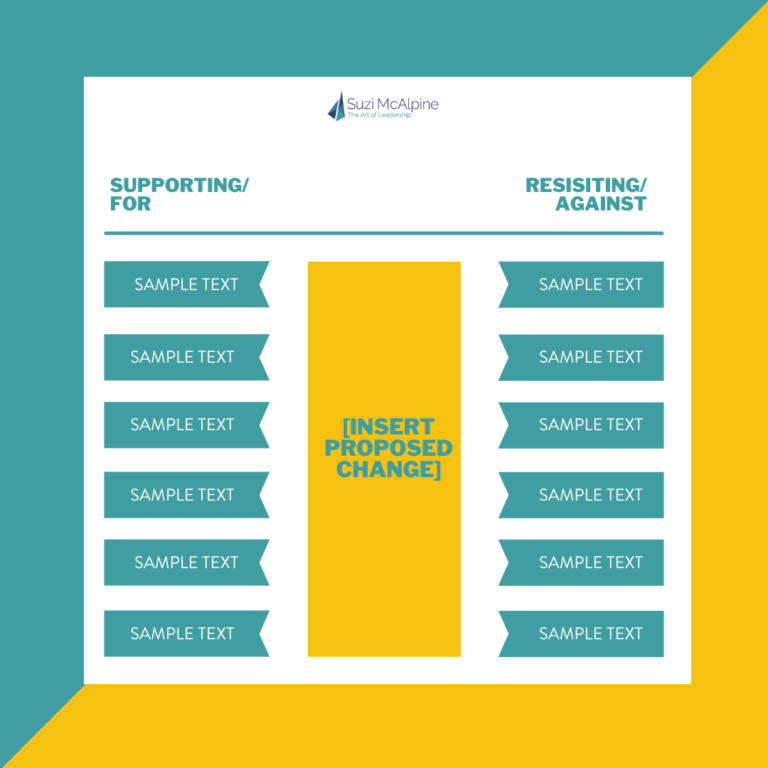Whenever there’s a new initiative or idea in your organisation, there will be forces that support it to happen – and forces that oppose it.
Seems obvious, huh?
But if, as a leader, you don’t acknowledge or sufficiently address the opposing forces at the beginning of a change process, the change process is more likely to come unstuck later on – when it matters.
You might be gung-ho and can list a million reasons why people should adopt this new initiative or way of being. But that doesn’t mean they’ll jump on board. For change to happen, you first need to identify the driving and resisting forces to that change. Once you have, you then need to take action on both.
Here’s a simple tool from a pioneer in the field of social science, Kurt Lewin, to help you identify forces supporting and resisting change. It’s called Force Field Analysis. Lewin reckoned that weakening a resisting force is the most effective way to make progress.
As the mother of teenagers, I tend to agree.
The Force Field Analysis Model in a nutshell:
Any new development or proposal in an organisation or team has forces supporting it happening – and forces opposing it. These forces can be illustrated in a T bar, listing ‘supporting’ on one side and ‘resisting’ on the other, like the diagram below.

How to apply the model:
It’s ideal to run this session with a few of you – the more diverse the group, the better.
Step 1: Hang a long sheet of paper on the wall or create a template on a web-conference white board showing a T frame.
Step 2: At the top, write the focus of analysis on the top of the chart. Another way is to put the change focus in a box in the middle, like this:

Step 3: Collectively list all the forces that will drive or support change that you can think of. These can be internal and external. Internal might be outdated machinery or a need to address poor H&S results. External drivers could be an increasingly volatile environment, COVID19, or changing demographics for instance. Go for volume – as many factors as you can think of.
Here are some questions as thought starters:
- What business benefit will the change deliver?
- Who supports the change? Who is against it? Why?
- Do you have the resources to make the change work?
- What costs and risks are involved?
- What business processes will be affected?
Step 4: When you’ve identified the forces that are driving change, add them to the left hand side of your Force Field Analysis.
Step 5: Next, brainstorm all the forces you can think of which resist or are unfavourable to change. Internal factors might be fear of the unknown, current policies, or organisational structures. Examples of external factors might be current commitments to customers or partner organisations. List all of them on the right-hand side of your Force Field Analysis diagram.
Step 6: Next, rank the forces according to the degree of influence each one has on the plan. Pay special attention to the forces resisting.
Step 7: Discuss for understanding and pick the most important resisting factors and those supporting factors which can be strengthened.
Step 8: Finally, brainstorm strategies for weakening the resistance. Think about which supportive forces you can strengthen and which opposing or resisting forces you can overcome, and how to make the change more successful. For example, you could increase training and communication around a particular fear (like fear of new technology).
Leading change has its share of headaches, but change is nearly always harder for your people than it is for you as the leader. If you want to increase the chances of any change process being successful, it’s wise to identify what could get in the way at the start – and think through how to overcome or weaken those obstacles.
Related: One of the Most Powerful and Underused Tools in Leadership

